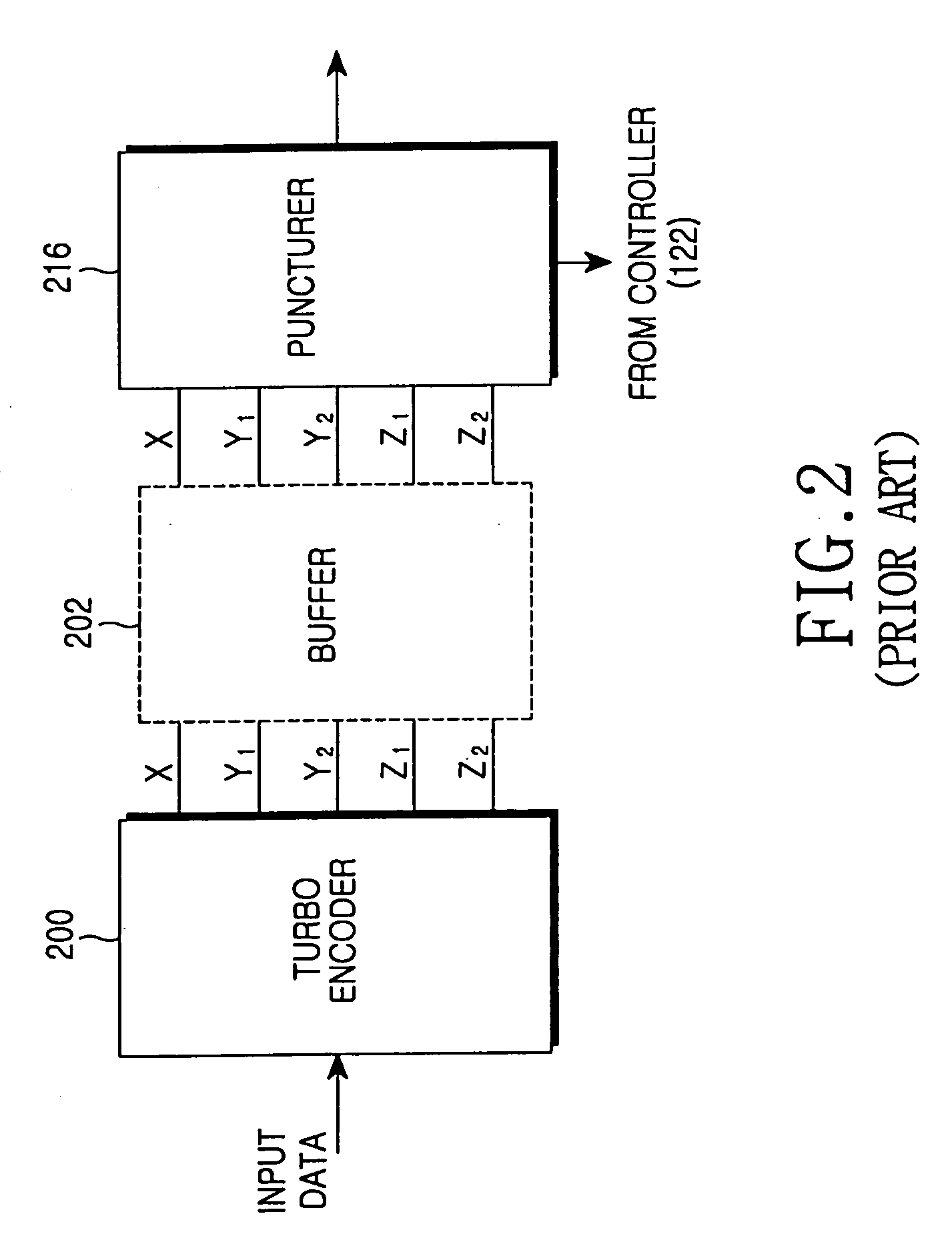Transceiver apparatus and method for efficient retransmission of high-speed packet data
a data transceiver and packet data technology, applied in the field of data transceiver apparatus and method in a cdma, can solve the problems of difficult to determine which technique is optimal for a given system, impedes a high-speed, high-quality radio data service, and difficult to achieve the effect of improving the performance of a radio communication system
- Summary
- Abstract
- Description
- Claims
- Application Information
AI Technical Summary
Benefits of technology
Problems solved by technology
Method used
Image
Examples
first embodiment
[0055 of Transmitter
[0056]FIG. 4 illustrates a structure of a transmitter in a CDMA mobile communication system according to an embodiment of the present invention. Though not shown, a turbo encoder, a channel demultiplexer and a spreader in the transmitter of FIG. 4 have the same structure and operation as the corresponding elements in the transmitters of FIGS. 1 and 2, so a detailed description thereof will not be provided.
[0057]Referring to FIG. 4, coded bits generated by encoding input data at a mother coding rate of a turbo encoder (not shown) are stored in a buffer 402. The coded bits are properly punctured by a puncturer 404 according to information on a coding rate and a selected HARQ type, provided from a controller 412. The puncturer 404 uses a puncturing pattern for puncturing the coded bits according to the HARQ type. For example, if the HARQ type is CC, the puncturing pattern used at retransmission will be identical to the modulation technique use at initial transmissio...
second embodiment
[0067 of Transmitter
[0068]FIG. 5 illustrates a structure of a transmitter for a CDMA mobile communication system according to another embodiment of the present invention. Like the embodiment shown in FIG. 4, FIG. 5 also shows only the elements arranged between the buffer and the modulator in the transmitter.
[0069]Referring to FIG. 5, coded bits generated by encoding input data at a mother coding rate of a turbo encoder (not shown) are stored in a buffer 502. The coded bits are properly punctured by a puncturer 504 according to information on a coding rate and a selected HARQ type, provided from a controller 520. The puncturer 504 uses a puncturing pattern for puncturing the coded bits according to the HARQ type. When the HARQ type is CC or PIR, an output of the puncturer 504 is comprised of a systematic sub-packet having only the systematic bits and a parity sub-packet having only the parity bits at each transmission. Here, when the HARQ type is CC, the parity sub-packet output from...
case 1
[0103 shows a method of retransmitting only systematic sub-packets for combining while ignoring redundancy parity sub-packets, even though the HARQ type is PIR. Case 1 is disadvantageous in that it cannot develop strong points of the PIR in terms of a valid coding gain, but it can remarkably increase a combining gain of the systematic sub-packets. In addition, Case 1 contributes to simplification of a hardware structure, since it operates as if the HARQ type were CC.
PUM
 Login to View More
Login to View More Abstract
Description
Claims
Application Information
 Login to View More
Login to View More - R&D
- Intellectual Property
- Life Sciences
- Materials
- Tech Scout
- Unparalleled Data Quality
- Higher Quality Content
- 60% Fewer Hallucinations
Browse by: Latest US Patents, China's latest patents, Technical Efficacy Thesaurus, Application Domain, Technology Topic, Popular Technical Reports.
© 2025 PatSnap. All rights reserved.Legal|Privacy policy|Modern Slavery Act Transparency Statement|Sitemap|About US| Contact US: help@patsnap.com



